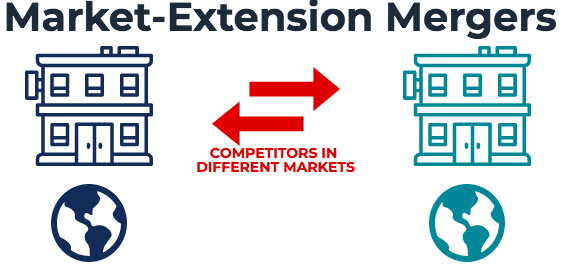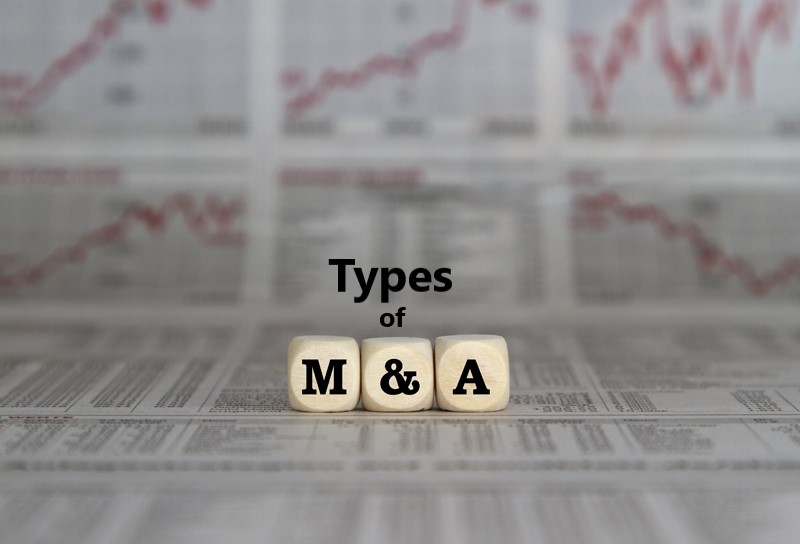Mergers and acquisitions (M&A) play a critical role in the growth and expansion strategies of companies across industries. These transactions will give enterprises unprecedented growth opportunities, leading to improved competitiveness against emerging market environment challenges. Beyond financial transactions, M & A activities always take the form of strategic planning, cultural integration, and value creation-for each organization that wants to deliver different forms of innovation or extend its activities into new realms or even realign its operational dimensions. An understanding of the volatile field as laid down by mergers and acquisitions is mandatory.
Further, in this blog, various kinds of mergers and acquisitions will be dealt with along with a discussion of their importance and their applications in day-to-day transactions.
What Are Mergers and Acquisitions?
Before going any deeper into its types of mergers and acquisitions, understanding the core of mergers and acquisitions would be of great worth:
Merger: A merger is the process of having two companies combine, thereby creating one big entity. This process is adopted mutually by both firms, and eventually, the resultant company also gets a new name, new structure, and even a whole new brand.
Acquisition: Different from his working, acquisition is that a company has taken over another by buying either controlling shares or the whole of it. In most cases, the acquired company remains as such in accordance with its original identity, depending on the clauses of acquisition.
Both mergers and acquisitions are conducted on the grounds of building up further assets, increasing market share, and gaining financial as well as strategic benefits.
Also Read: Mergers and Acquisitions (M&A) Understanding
Types of Mergers
Mergers can be categorized into five main types, each serving a specific business objective:
1. Horizontal Merger

Horizontal mergers refer to a union of two companies sharing the same industry and working at the same stage of production- these firms are usually direct competitors.
- Purpose: The primary reason for a horizontal merger is found in reducing competition, increasing market share, and obtaining economies of scale.
- Example: An example of this could be two airlines merging their operations to bring forth a much larger and stronger competitor in the domestic market.
2. Vertical Merger

This merger occurs when two companies associated with another supply chain merge. For instance, a manufacturer merged with its supplier or distributor.
- Purpose: Efficiency in existing operations, cost cutting, and enhanced control over their supply chain is what vertical mergers try to achieve.
- Example: The purchasing of a tire company by an automobile manufacturer in order to set up production would have the advantage of reducing dependence on outside sources.
3. Conglomerate Merger

These are mergers between two businesses that operate in completely different industries and therefore they have nothing in common, not even direct competition or any supply-chain links.
- Purpose:Diversified business operations are meant to reduce risks of being exposed to very few markets alone.
- Example: It could be a tech company joining hands with a retail chain to have a broader market offering and more revenues.
4. Market-Extension Merger

Market extension mergers take place between two companies existing in the same industry and functional areas, with a difference in the geography of their operations.
- Purpose: New markets are always in line for exploration with these mergers, as are new and diverse territories and potential customer bases.
- Example: A domestic alcoholic beverage company merging with an international brand would be able to reach a global market.
5. Product-Extension Merger

In a product-extension merger, two companies offering complementary products or services combine their operations.
- Purpose: Products will increase in availability; complementary selling opportunities will be created and strengthened in strategy as a whole in the market.
- Example: Two companies merging together-a manufacturing company of mobile phones and another software company -- to ensure their joint product is of higher value as per user needs.
Types of Acquisitions
Acquisition exists by the mode of transaction, including merger and purpose. Major types are:
1. Friendly Acquisition
Friendly acquisition is acquisition where both companies agree mutually and work together to finalize the deal with each other.
- Purpose: The creation of value for shareholders and encouraging a strategic alignment.
- Example: A big retail chain acquires a smaller competitor with its full consent moves in a friendly takeover.
2. Hostile Acquisition
In hostile acquisitions, an acquiring company takes over a target company without agreement by buying a majority of its shares.
- Purpose: Attainment of control over valuable assets or market share.
- Example: A tech giant taking over a small company despite resistance from its top management.
3. Reverse Acquisition
A reverse acquisition takes place when a private firm acquires a public company, granting it access to the public market without the need for an IPO.
- Purpose: To become a publicly traded entity quickly and cost-effectively.
- Example: A start-up buying a shell company publicly listed.
4. Asset Acquisition
Acquisition of assets is a type of acquisition in which only those assets are acquired that pertain to a certain business and not the whole business.
- Purpose: To have important assets and at the same instant devoid of target liabilities.
- Example: Media acquisitions for publishing rights of another firm.
5. Stock Acquisition
In stock acquisitions, a company acquires majority or all of the shares of the target company.
- Purpose:To procure the rights as well as the control of the target corporation.
- Example: A multinational corporation takes over a local competitor through its shares.
Key Drivers of Mergers and Acquisitions
It definitely is both strategic, financial, and operational considerations that predominantly make mergers and acquisitions a complex decision concerning doing business. The main reason one would decide to pursue such transactions is that perhaps such goals are much more difficult or unachievably challenging under organic or independent ventures. Now, let's check and see what some of the key drivers behind M&A activities are:
- Growth Opportunities: Growth is the fundamental objective of any business and mergers and acquisitions are faster means in realizing this goal as compared to organic strategies. The process involves expanding operations and exploring new geographic markets, and new customer bases have been serviced. For instance, a domestic player could engage in a merger with a company operating internationally to open up global markets and very many markets, permitting fluxes in revenues. This would not only hasten the growth rate, but also lower the risks of dependence on a single market.
- Cost Efficiency: Economies of scale definitely serve as one of the purposes of this driver apart from the previous ones. Merged operations save companies some sharp redundant cuts in cost reductions and optimal utilization of resources in streamline day-to-day expenses. For example, two companies of the same industry, having facilities in production operations, might merge in order to get to unity and economize their costs per unit in production This implies that economies of scale come into effect when shared infrastructures, supply chains streamlined, and reduced administrative functions. A lot of costs can be saved.
- Innovation and Technological Advancements: Innovation and Technological Advancement: Companies often perceive mergers and acquisitions as a shortcut to acquiring latest technology, IP, or specialized talent in times of innovation dominance. For instance, a traditional manufacturing company is now linking with a tech start-up for the purposes of incorporating processes that are much more automated at the very front end of production. This approach not only enhances the company’s capabilities but also strengthens its position in the competitive landscape.
- Market Power: Aiming at reducing competition and even establishing their market predominance, improving market dominance are the main reasons behind M&A activities. It is through these merge-and-acquire strategies that companies consolidate their market position, gain an upper hand in pricing, and grab a bigger share of the market. This is quite common among industries where there is a lot of competition, aiming to reduce market fragmentation and would like to carve out themselves as leaders.
- Synergy Creation: The most compelling reason of all hosted FAT were the optimal synergies-the combined value exceeding that of the standalone entities. These synergies may find operational (saving on costs from more efficient mode), financial (as much borrowings on lesser interest charge), or strategic (enhanced capabilities and reach into the market) forms. For instance, suppose one with GTX marketing capabilities acquires a firm with enhanced research and development facilities.
Benefits of Mergers and Acquisitions
The advantages create an internal and external transformation that can contribute to their long-term strategic goals. Some of the major positives include:
- Increased Market Share: By combining, companies can serve a much larger customer base and consequently enhance market presence. For instance, in competitive industries-the major factor in scale and market share tends to determine success-the fusion of two key industry players usually leads to the dominant entity establishing industry standards.
- Improved Operational Efficiency: M & A serves as a common reason of the cases of vertical integration within the supply chain. For example, a manufacturing firm acquiring a supplier can ensure a steady flow of raw materials, reduce procurement costs, and eliminate delays. Such efficiencies contribute to smoother operations and higher profitability.
- Enhanced Financial Performance: As a result of mergers and acquisitions, synergies are often realized in better financial performance. Rucing costs, increasing revenues, and improving operational efficiency or effective asset utilization often provides a profitable entity. Another benefit is that it will create an entity with unique capabilities that can attract investors and improve possibilities to access capital markets by bringing the combined entity into the necessary focus.
- Access to New Markets: Going into any unexplored market territories is, indeed, one significant advantage that comes as a result of carrying out an M&A. By investing in proper integration strategies, companies are able to tap into the established and strong local understanding, infrastructure, and relationships of a merged or acquired partner to place its flag in further new locations where they never would have thought to venture diversification could simply help manage economic or political uncertainties when sanctions are imposed in a single market.
- Diversification: Diversification of commercial operations among various conglomerate merger companies has been created for companies in unrelated industries. This can protect them from cyclical downturns from one sector by spreading the risks over several markets and products. According to one example, a food processing company with an acquisition of a logistics firm can bring diversity not only to its portfolio but also achieves operational synergies.
Challenges and Risks in M&A
While a merger or acquisition between companies provides transformational benefits, it also calls in its own share of challenges and risks. These include:
- Cultural Integration: Organizational cultures create various integration issues. Putting together integration devices that align in terms of work procedural and communication forms all around different values and behaviors raises the tendency of conflicts among employees and possibly within the team; hence, affecting productivity and morale.
- Regulatory Compliance: Mergers and acquisitions that cross borders necessitate authorization from concerned authorities designed to uphold competition and prevent monopolistic practices. Navigating these legal and regulatory frameworks can be time-consuming and costly. Failure to comply can result in delays, fines, or even the cancellation of the deal.
- Overvaluation: Paying too much for an acquisition target company in an M&A transaction is one of the most common perils of the field. Some major risks are counted into, among others, an overestimation of synergies, an underestimation of liabilities or even aggressive tendering during competitions leading to financial losses for the acquirer. However, proper due diligence and an impartial valuation are important in reducing the risk.
- Employee Retention: The transaction often breeds fear and hence employee turnovers in M&A activities. Key people can walk away from an organization due to insecurity related to the job or changes in leadership or misfits in cultural heritage. It would be essential to find means and strategies to keep employees from scuppering over M&A-related trouble.
- Execution Risk: A good deal of benefits stemming from deals can be imperiled via improper planning to integrate. One research outlines the greatest challenges, such as mismatched systems, faltering uncoordinated operations, and lack of synchrony in terms of strategy objectives, which may lead to suboptimal results. An accurate and appropriately structured integration plan, backed by a strong lead, secures the successful conclusion of the transaction against the otherwise possible wrecking of all benefits.
Conclusion
Mergers and acquisitions are considered as very effective strategic instruments for achieving corporate growth and transformation. By first getting to know the different types of mergers and acquisitions and the goals in using each of them in the strategy, firms can proactively position and slip into the intended goals in the long term. It becomes one of the most impeccable deals that require considerable planning, due diligence, and sound performance for achievement. Be it horizontal rival-reducing mergers or vertical integrations, every type has a unique role to play in shaping the future of businesses.
Also Read: Process of Mergers and Acquisitions: A Broad Summary


